I hope you enjoyed the first chapter of I love Berlin.
This time I would like to talk about Berlin as a monument city.
It felt to me as one big memorial place. Wherever you go you can see the damages of the World War II as most of the restorations left the demolished parts marked. On almost every step there is a monument or memorial. It might sound bad with a taste of tourist industry.
It might be so but I think that it has been done mostly with a good combination of art and architecture so I didn’t mind.
I mention briefly the Brandenburg Gate which is Berlin’s symbol and the only preserved city gate.
In the past this was the entrance to the city and anyone who wanted to go through the gate had to pay a toll. The first gate dates from 1734.
In 1788, a new gate was built by architect Carl Gotthard Langhans on behalf of the Prussian king Frederik Willem II, in memory of the occupation of the Republic of the Seven United States in 1787. It’s a neoclassical architecture with images that describes the war with a hint of Greek mythology. Nice to see but don’t have any special comments on the architecture/art.

The Berlin Bear is another symbol that can be seen in every corner in many colors and variation thanks to Klaus and Eva Herlitz, who in 2001 decided to start a street art project in Berlin and introduce the Buddy Bears.
Why a bear? There are some interesting theories about it.
One is that the bear was chosen as homage to Albrecht the Bear, founder of the Margraviate of Brandenburg in 1157. This would have been about the time that Berlin was first settled.
Another theory is that the bear was chosen to create a canting or singing arms, because the German word “Bär” (bear) sounds phonetically similar to the first syllable of Berlin. But most likely the prefix “Ber” has nothing to do with German because Berlin was settled by Slavs. There is an old-Slavic word “berli” that describes a rigid net submerged in the water to catch swarms of fish. It could be that the first settlers built plenty of berlis in the Spree, and that they themselves became known to others as the “Berline,” thus spawning the name Berlin.
Whatever the reason is, I loved the Buddy bear in its colors and variations although it’s obviously touristy.
The Victory Column is one of the city compass points – it has reinvented itself through the ages – from symbol of Prussian military victory in the 19th century to a favourite tourist spot today.
What I loved the most was Anton von Warner’s mosaic of 1873, which portrays Germania as an allegorical image. I have never seen such fascinating artwork made in this technique! Such a vivid picture with so much care for the small details makes it feel real.
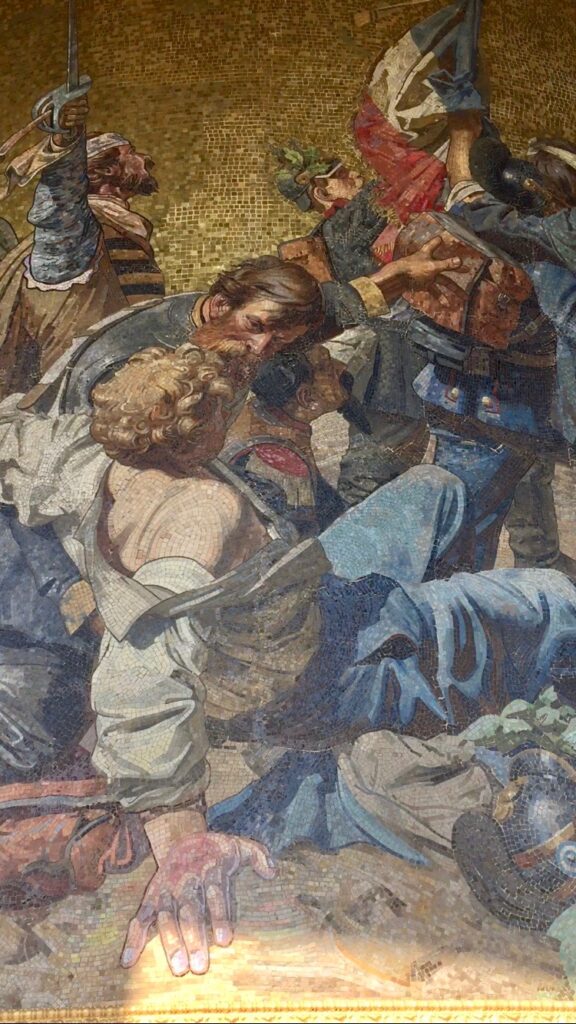
The pearl in the jewel to my opinion is the Reichstag building – a sculpture of light! Unfortunately when we visited it was rainy and foggy so we missed the stunning view of the outside. But as I’m writing about architecture the focus is on the building itself. Norman Foster did a wonderful job redesigning the building after the reunification of Germany and Berlin becoming once again the capital. Foster decided to keep the exterior intact as a reminder of the past. The interior was completely stripped and modernized. It is an art to connect two different styles in an elegant way and all I can say here is that down to the smallest detail Foster’s work is splendid.
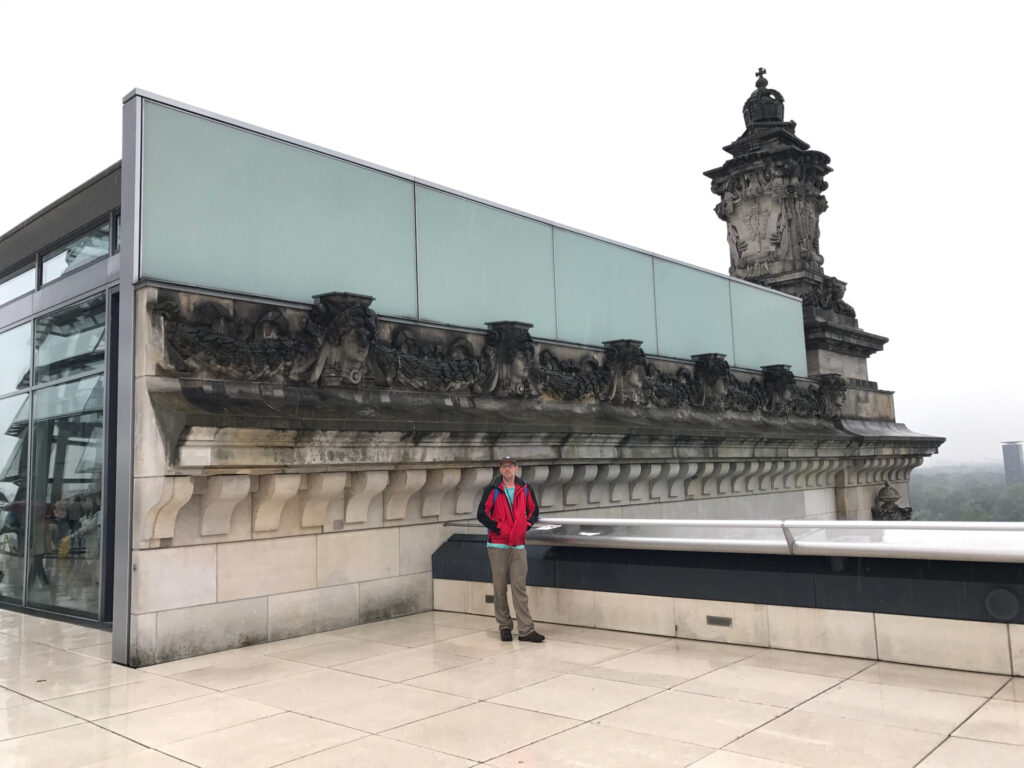
The beautiful glass dome is supported by a central mirror column. That column is not only beautiful but also provides a model for sustainability. The column facilitates a cogenerator to produce electricity by burning renewable bio-fuel – refined vegetable oil, a system that is far cleaner than burning fossil fuels. The result is a 94 per cent reduction in carbon dioxide emissions. Surplus heat is stored as hot water in an aquifer deep below ground and can be pumped up to heat the building or to drive an absorption cooling plant to produce chilled water. Significantly, the building’s energy requirements are modest enough to allow it to produce more energy than it consumes and to perform as a mini power station in the new government quarter!
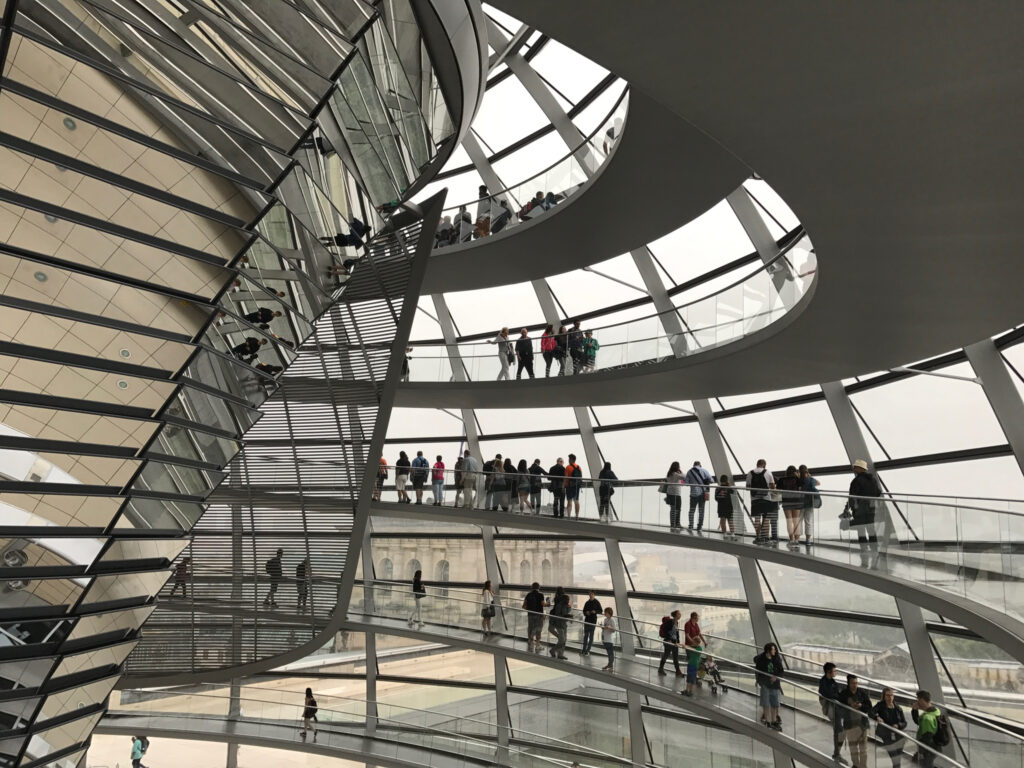
The mirrors surrounding the cone directs natural sunlight into the building and includes clear panels so that visitors in the public space above can see the inner working of the chamber below.
It creates enough daylight inside so there is not much need for artificial light, however there is also rotating sunshade to protect the congregates from too much sunlight.
Walking a spiraling ramp on the inside of the dome, which appears to be free floating, gave me a feeling of awe. It’s beauty, it’s majesty, it’s size made me feel like I was walking up to heaven – a sort of modern Babylon tower. Once up there, it indeed felt like heaven! The top of the dome includes an open-air viewing platform with an impressive 360-degree panoramic view of the surrounding Berlin cityscape. Well we only got wet, and the view was sealed by the fog; good reason to visit again.
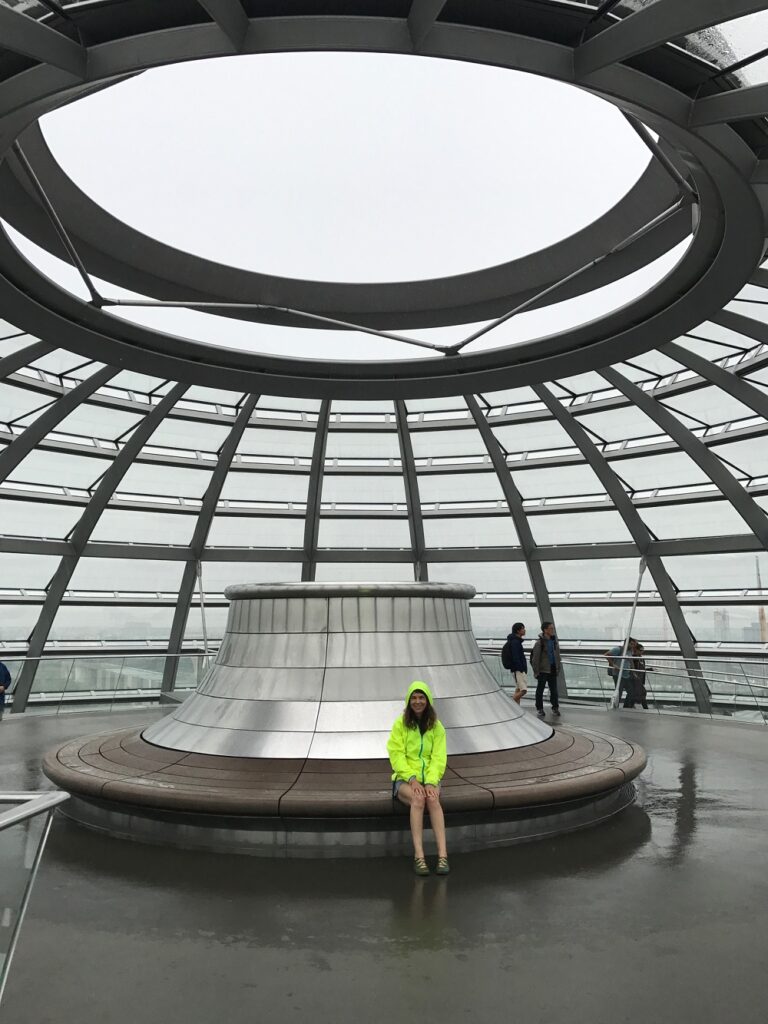
Berlin is also very conscious of remembering World War II and has numerous monuments.
We visited the Jewish and the Gypsy’s Holocaust monuments and of course the Jewish Museum.
It is interesting to look at the different approaches to the same theme but what I liked the most in all of them is that they are open for your own interpretation.
The Jewish Holocaust monument is designed by the American architect Peter Eiseman.
It consists of 2711 concrete blocks ranging in height from 20 cm to 4.5 meters with a mutual space of 95 cm. It’s a large monument (even crossing the road to the Tiergarten!) and there is no fence around it so you can see it whenever you pass by and we passed there quite a few times. Every time it evoked in me new feelings. The first time I walked through I felt isolated and cold, the concrete blocks are high and do not let the sun come in. The uneven ground and the relatively narrow passages made me think about the difficulty the Jews had escaping their fate. But there was also a sense of hope since through all the passages you could see an open end; It doesn’t matter how difficult and hopeless it is now – there is always way out of it. A surprising feature is the trees that are growing between the concrete blocks. Those trees made me feel that even in the worse situations not everything is dark and cold but there are also points here and there that can relate to the normal life. The second time we biked along and viewed the monument from the outside it felt like a big graveyard. All those blocks looked like unnamed gravestones.
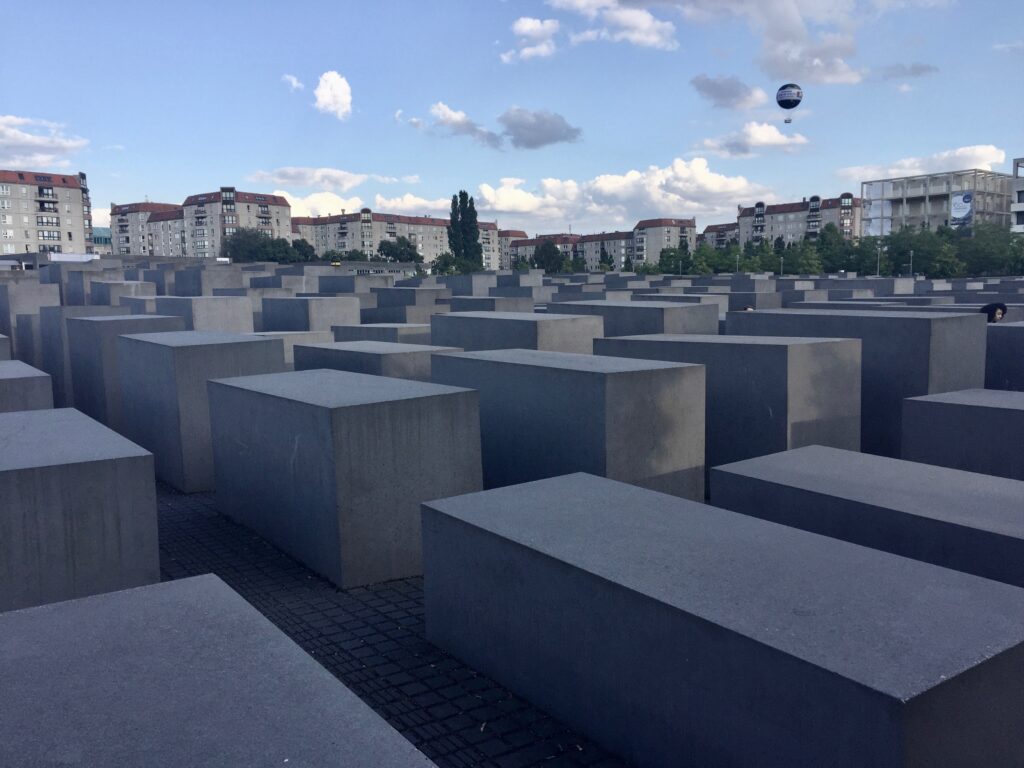
If you visited that place, what was your experience? How did you interpret the place?
The Gypsy’s memorial on the other hand is relatively small and fenced in with a glass wall with text imprinted, telling the gypsies’ story. Dani Karavan designed it and in my opinion he did an amazing job. When you enter the metal port you come to a silent and surrender place surrounded by trees. The only thing there is a pool of water and a poem engraved in English, German and Romani on the metal edge. It happened so that when we visited the monument it rained and it felt like the pool is made of tears. Even though the memorial is small it has strong impact.
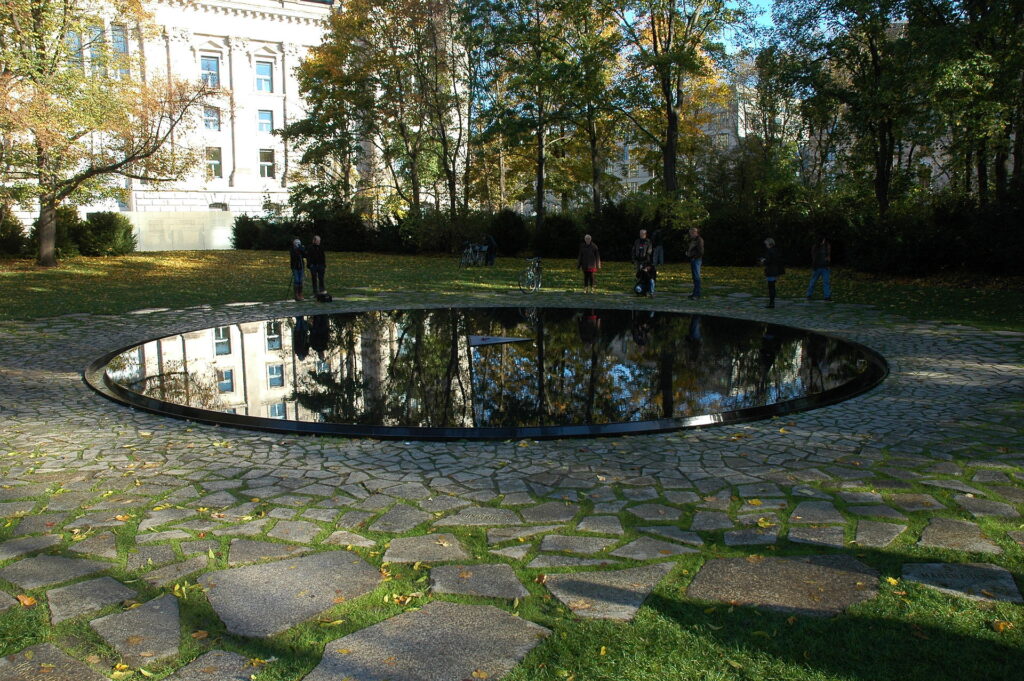
The Jewish Museum I personally didn’t like the architecture of but I still can appreciate Daniel Libeskind’s design. The building facade reminded me medieval warrior armour.
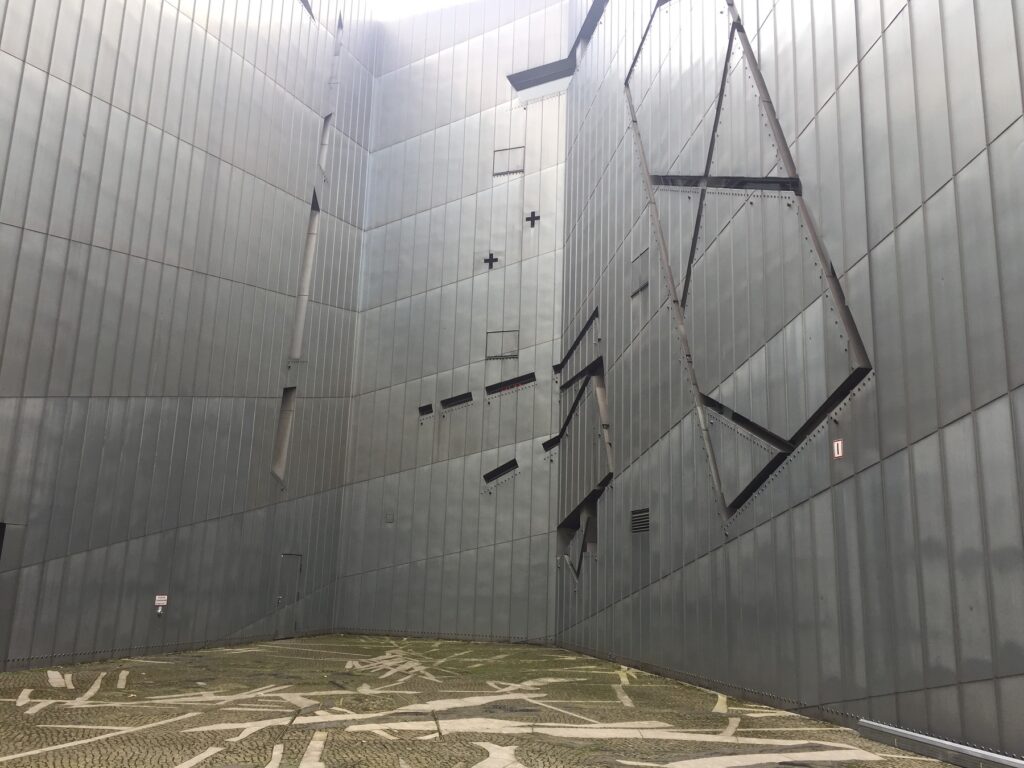
The inside was cold and disorienting.
The floors and ceilings changed in height and caused illusions in sizes.
The architecture is so strong that it takes away from the exhibition and displays, giving me a sense that the exhibit was forced to fit into the space.
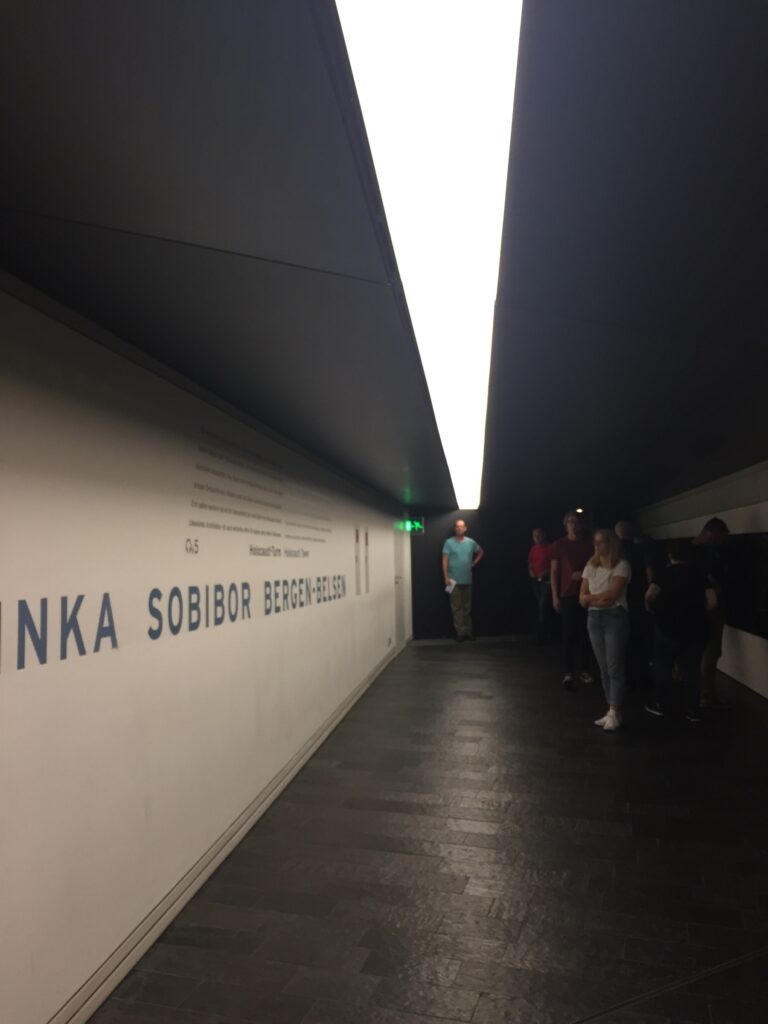
The features I did like were the Memory Void and the Garden of Exile.
The memory void is a small, dark, and empty space with a small beam of natural light.
It is located in the center of the building and you can look into it from different locations along the path through small windows. Inside the void I felt hopeless and isolated from the world. It was cold and evoked fear.
At the end of the museum route you came to a section in the void with an installation called Shalekhet (Fallen Leaves) designed by Menashe Kadishman. More than 10,000 faces with open mouths, cut from heavy round iron plates, cover the floor. While walking on the iron the sound echoes and sounded to me like the screaming of the war victims. Kadishman used the space to create not only strong visual impact but also sound.
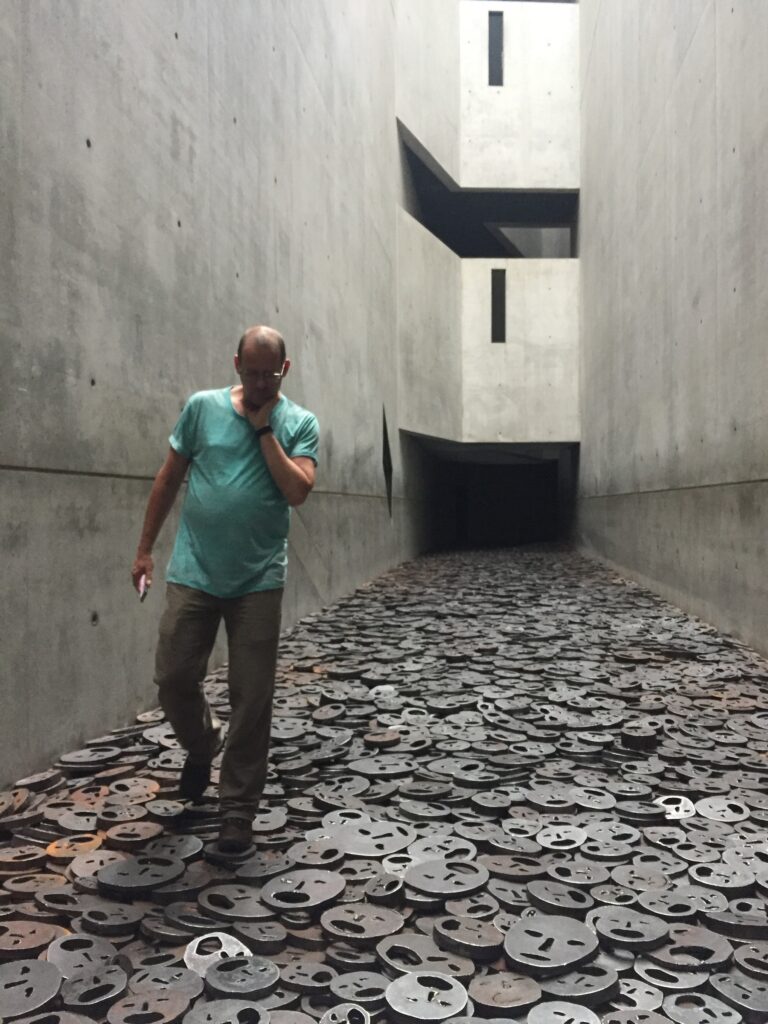
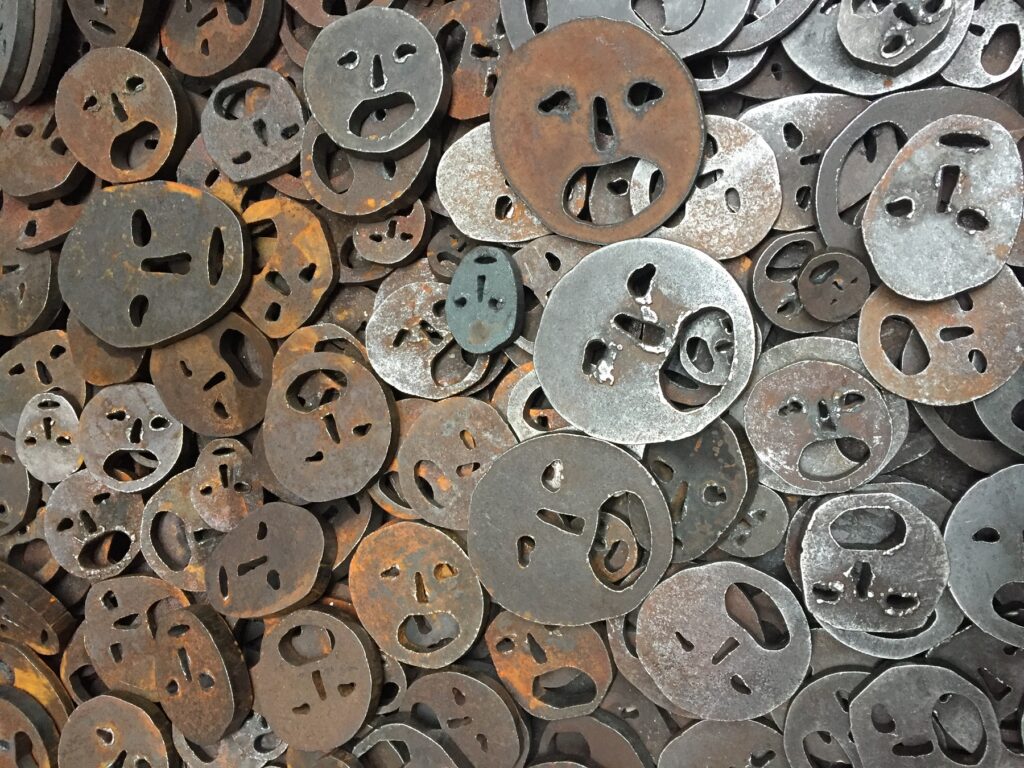
The Garden of Exile reminded me a bit of the Jewish Holocaust Monument with its rows of forty-nine concrete container columns. The simple sculptural garden of concrete and willows conveyed more emotion combined with a physical sensation of oppression and loss than the detailed museum displays were able to do. The garden’s columns are arranged in a square on a 12° gradient effectively disorienting and destabilizing you as you walk up and down the rows. Only when you look up and see the willow branches reaching towards the sky, dripping over the edge of the container columns, do you feel the possibility of release.
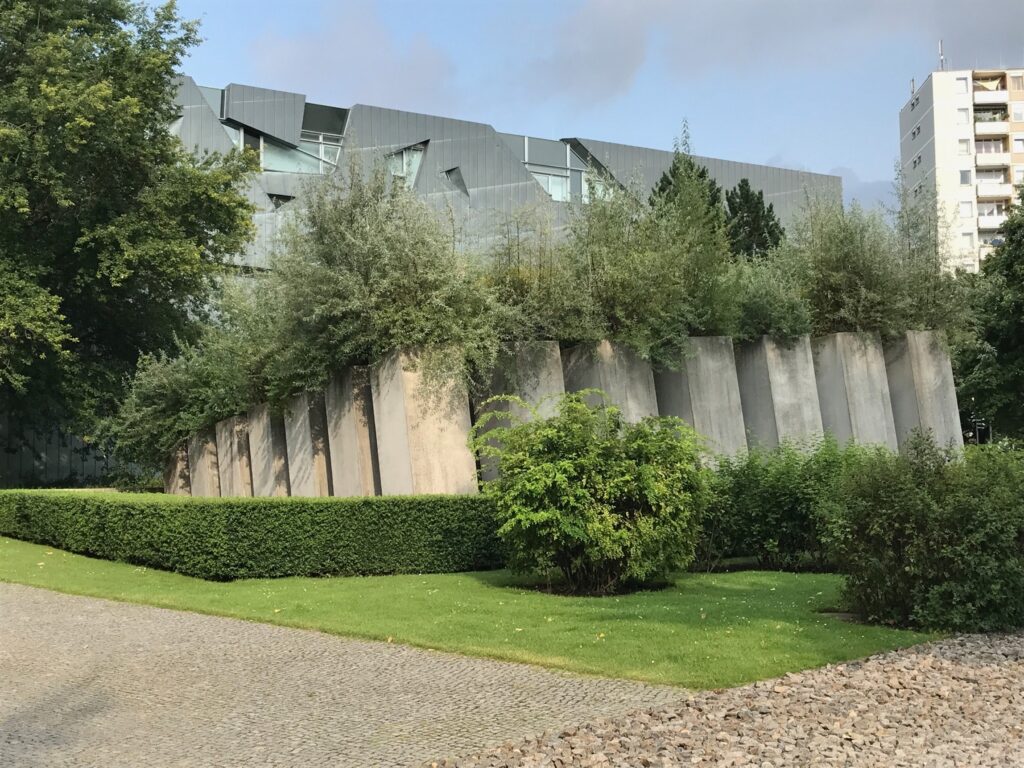
Standing there in between the rows I felt just like in the Holocaust Monument, a claustrophobic, disorienting experience, where you are aware that logically, escape is very close but physically, you feel as if you are trapped forever.
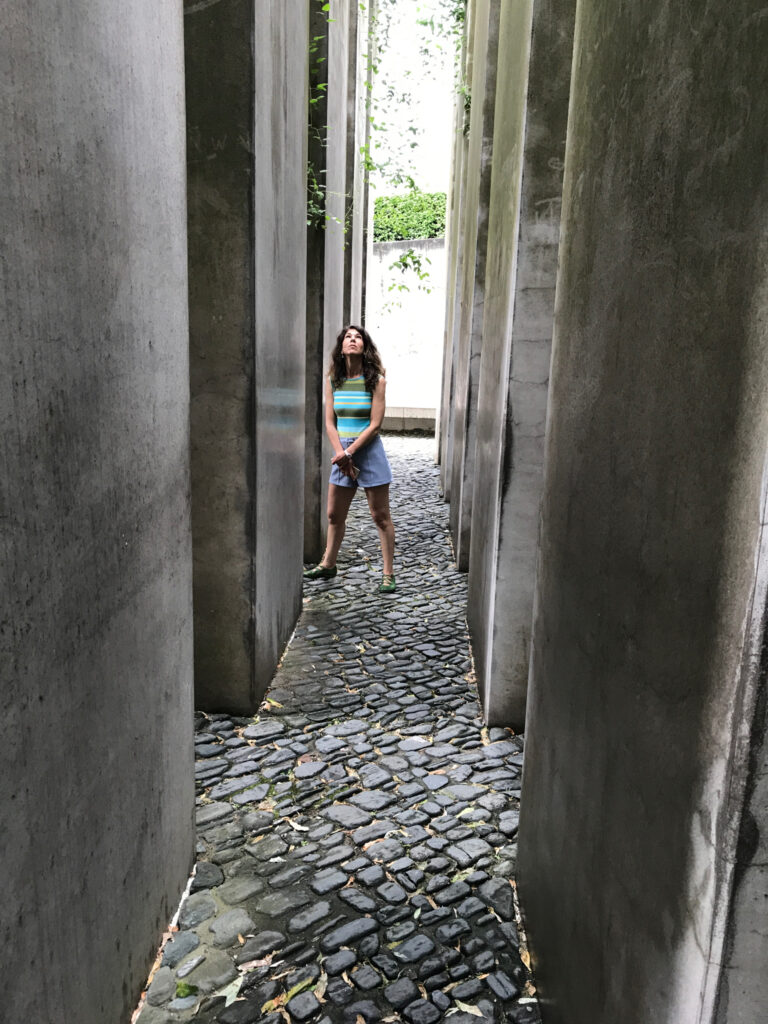
Last but not least is the Berlin wall. The leftover of the wall didn’t evoke in me much of the experience the Berliners had to endure for almost 30 years. It is more the panorama image that shows both the banal routineness and subtle horror of normality in the divided city that made me really understand the gravity of the situation. The image that was painted by Yadegar Asisi displaces the visitor into the daily life in the vicinity of the Berlin Wall on a fictitious autumn day in the 1980s. The alternative life in the district of West Berlin with its punks, squatters or a petting zoo in Kreuzberg is completely separated from life in East Berlin – albeit only a stone’s throw away. Death strips and border fortifications divide East and West Berlin, East and West Germany, Capitalism and Communism.
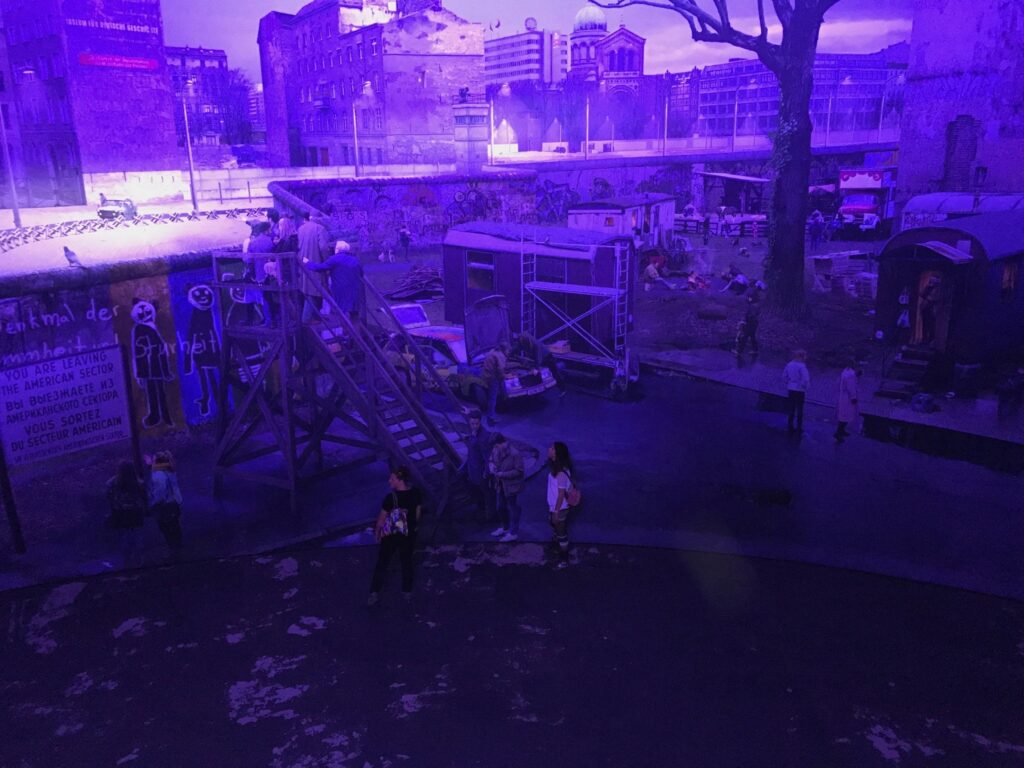
Also walking on the streets with the paved marks where the wall stood can give you some of the experience of the impossible situation. I did find the ‘leftover” pieces in every shop an abusive demonstration of capitalizing on sad memories.
There are more memorials and museums but there is only so much you can visit in 4 days… something needs to be left to next time 😉
I would love to hear your point of view or experience about the places mentioned.
If you know a place I missed and that I have to see, please note it down.
I’m definitely planning to visit this wonderful city again!
